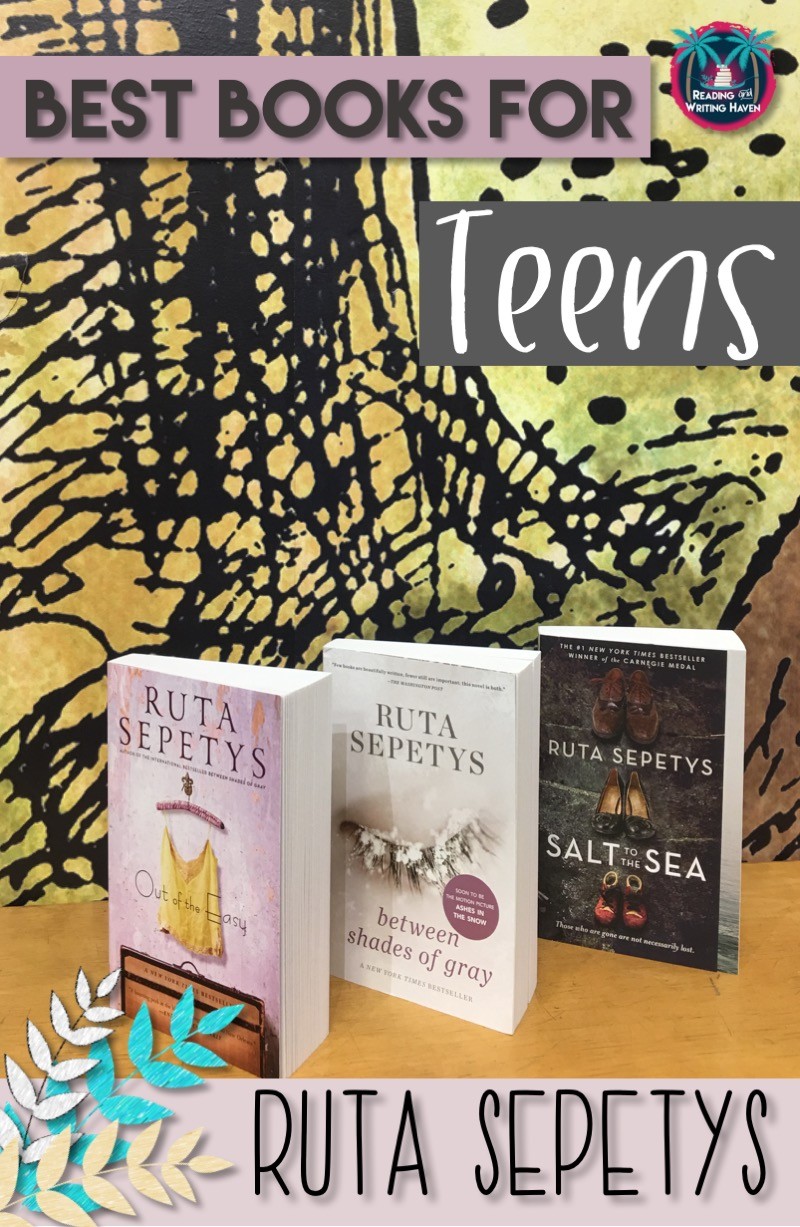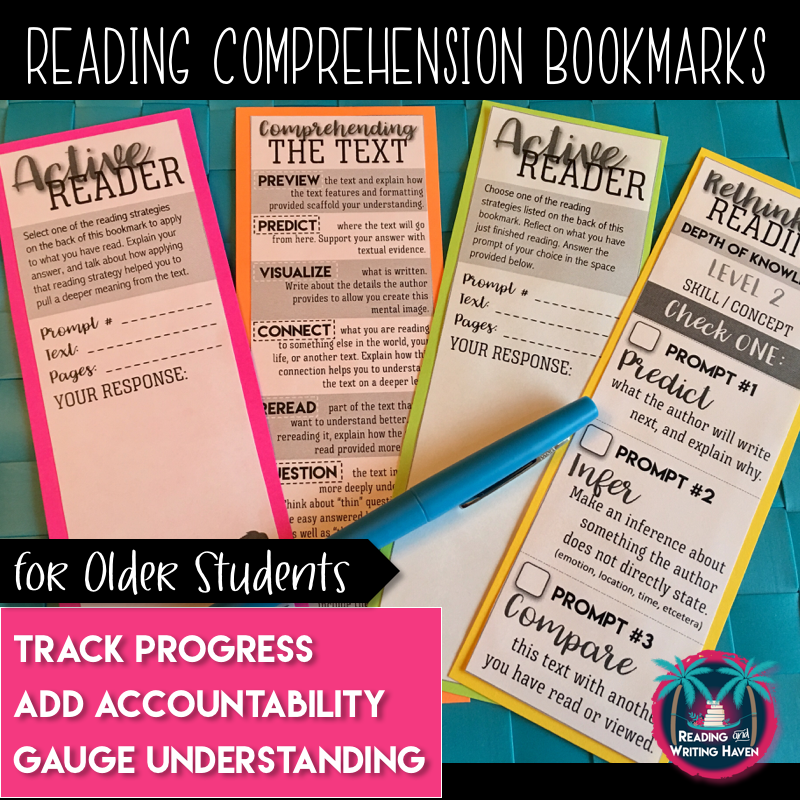Best Books for Teens by Ruta Sepetys
Looking for high-interest literature? Stick around to find out why three of the best books for teens by Ruta Sepetys deserve a spot in your classroom library.
Welcome to “This or That,” a monthly chat where the authors of Reading and Writing Haven and Language Arts Classroom cover different ways of approaching common decisions in the ELA classroom.
“Mrs. Kruse, what are you reading?” Perhaps there is no sweeter sound to an English teacher’s ear than hearing a student show interest in a book. Sometimes, when I’m busy (you know those times – you have five million things on your mind, but you’re supposed to be modeling silent reading), I feign like I’m reading. Simply putting my nose in a book piques students’ interest. This one simple question opens the door for book recommendations, meaningful discussions, and relationship-building opportunities.
For this reason, I try to be well-versed in young adult literature. Recently, I just finished reading Ruta Sepetys’s novels: Salt to the Sea, Between Shades of Gray, and Out of the Easy. All three of these books have such unique opportunities for study, and – even better? They are all page turners. Do you have reluctant readers? Try these.
Whether you’re looking to add new novels to your classroom library, thinking of incorporating new literature circle books, starting a book club, assigning an author study, or just plain curious, these are three of the best books for teens by Ruta Sepetys.
3 OF THE BEST BOOKS FOR TEENS BY RUTA SEPETYS
Salt to the Sea
About the Book
This novel – set in Prussia during WWII – is told from multiple points of view. Readers follow Joanna, Florian, Emilia, and Alfred’s story as they struggle to escape two opposing and dangerous forces: the Soviets and the Germans. Each character has secrets, which are revealed gradually as the plot progresses. For instance, Emilia? She’s pregnant, but we don’t find out the tragedy of her tale until near the end. This eclectic group of teens who aren’t German or Soviet – who don’t really belong anywhere or have anywhere to go – find themselves relying upon complete strangers to survive in the war-torn country.
Why I Like It
Salt to the Sea is literally overflowing with powerful figurative language. This novel would be perfect to use as a whole-class read or as a mentor text for writing or literary analysis. The opening lines from Chapter 2 provide a glimpse of the author’s talent:
“Fate is a hunter.
Engines buzzed in a swarm above. Der Schwarze Tod, “the Black Death,” they called them. I hid beneath the trees. The planes weren’t visible, but I felt them. Close. Trapped by darkness both ahead and behind, I weighed my options. An explosion detonated and death crept closer, curling around me in fingers of smoke” (3).
Teaching Points
Besides the figurative language, this novel is full of epithets: the knight, the nurse, the Polish girl, the wandering boy, the shoe poet. Plus, there are many opportunities for research since the book covers information that is rarely studied during traditional World War II units.
Pair with…
This book would pair well with All the Light We Cannot Sea due to the similarities of the historical setting and also the secrets of the main characters. As it tells the tale of the forgotten Titanic of World War II (the Wilhelm Gustloff), students would have a familiar text with which they could make connections.
Rated PG
What I appreciate the most with this book is that other than the deaths caused by war, this book is completely appropriate for both middle and high school.
Between Shades of Gray
About the Book
While I loved all of Sepetys’s novels, this one is my absolute favorite. Like Salt to the Sea, Between Shades of Gray is set during WWII. Sepetys prides herself on telling untold stories, and this one certainly doesn’t disappoint.
The protagonist is a fifteen-year-old Lithuanian girl who is sent to a work camp in the Arctic Circle (one of the northernmost points of Siberia). It is here that she experiences heartache no teen should ever have to endure, but it is also here she learns about perseverance, resilience, showing compassion for the enemy, and survival.
Teaching Points
This novel has many examples of irony you can analyze with students. Take this example of dramatic irony, for instance, as the Americans completely miss the sickly and destitute prisoners of war who are being forced to hide in mud huts they constructed to protect themselves from the polar winter:
“Stay put, Lina!” said Mother. “Do you understand me?”
She was right. The NKVD was hiding us from the Americans. We stayed in our jurtas for more than five hours. That’s how long it took for the American ship to be unloaded. As soon as the ship sailed, the NKVD came screaming for us to get to work. There were supplies to be moved to the bakery and NKVD barracks. I watched as the American ship drifted out of sight, pulling thoughts of rescue away with it. I wanted to run to the shore, waving my arms, screaming” (281).
Between Shades of Gray also features a variety of conflict types you can explore with students. Lina and her family battle human enemies, the elements of nature, and the expectations of various societies, just to name a few.
Rated PG-13
I would feel comfortable sharing this novel with all of my high school students. Since it does take place during WWII, it contains violence and death (not unlike other books on the same topic). During one part early on in the story, a soldier violates Lina by touching her chest, so for that reason – and a couple others – I would hesitate to recommend it to middle school students.
Pair with…
This novel would make an ideal fictional counterpart for the nonfiction books Night and Unbroken. Students who have enjoyed books like Number the Stars, The Diary of Anne Frank, The Book Thief, and Sarah’s Key would love this one as well. Throughout the story, Lina chooses to cope with tragedy by drawing, so students who have an artistic tendency might connect well with the main character.
Out of the Easy
About the Book
Out of the Easy is set in New Orleans during the 1950s. Much of the story revolves around protagonist Josie, whose mother lives and works in a brothel. Due to this fact and the additional violence that (in my opinion) has the opportunity to desensitize adolescents to these serious topics, I wouldn’t recommend this novel to all students.
Rated R
Juniors and seniors in high school or even students who come from a rough home life, who have experienced drugs and promiscuity, or whose parents are absent would be able to relate to the book well. Still, in my own classroom, I would make sure to get parental consent even when offering this book as an option to freshmen or sophomores.
Why I Like It
The reason this novel is so powerful is that Josie is very much unlike her mother. She strives to maintain her purity, to make the right choices, to be successful in life – ultimately, to get out of The Big Easy.
Teaching Points
This book is the perfect text to study and analyze how dynamic characters change from the beginning to the end of the text. Since this novel isn’t one I’d teach in a whole-class setting, students can easily do this on their own during choice novel studies. Out of the Easy also presents opportunities to study colloquialism, dialect, historical elements, and cultural stereotypes.
I love how this passage shows Septeys’s ability to show instead of tell – another excellent writing lesson that could stem from this book:
“Willie said normal was boring and that I should be grateful that I had a touch of spice. She said no one cared about boring people, and when they died, they were forgotten, like something that slips behind the dresser. Sometimes I wanted to slip behind the dresser. Being normal sounded perfectly wonderful” (45).
Pair with…
This novel would pair well with books like We Beat the Streets or other texts where teenagers have overcome the odds and chosen to rise above their given circumstances.
These three novels will quickly make their way into your students’ hearts if they enjoy historical fiction and untold stories inspired by real-life events. Have you already read these best novels for teens by Ruta Sepetys? We’d love to hear your thoughts in the comments. Interested in reading about more high-interest options? Language Arts Classroom is sharing her thoughts on Sara Dessen; don’t miss her post!
READ NEXT:
10 High-Interest Young Adult Novels to Add to Your Classroom Library
READING TEACHER RESOURCE:
If you need some bookmarks to keep your students actively engaged in their choice reading novels, you might want to check out these versatile reading comprehension bookmarks to use with middle or high school students. They work well with all levels, but especially as scaffolding for struggling readers.
[sc name=”mailchimp1″]



As a middle school ELA teacher that spends an entire unit focusing on the Holocaust, I love these recommendations!! Between Shades of Gray would be the perfect addition to my Literature Circles unit. Thank you for the recommendations.
Thank you, Tori! Yes, Between Shades of Gray is one of my favorite YA novels. It would be very engaging for many students as a literature circle option.